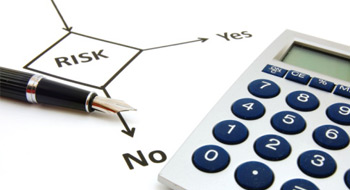

De-risking is a term we’ve heard often in the last few years, as is liability-driven investing. But, in a sense, neither should be necessary, as all DB investing is at least “liability-aware.” So let’s assume a pension trustee is talking about de-risking in terms of matching assets to liabilities, focusing on substantially reducing the mismatch.
De-risking is not a great idea for all plans. Why? Because if you de-risk, you’re reducing the proportion of your assets that works to enhance the pension fund’s return beyond the natural growth rate of its liabilities. In other words, you’re consciously reducing your long-term expected return.
In what situations is that appropriate? It depends on what’s more important to you: asset risk (How uncertain is the future size of your assets?) or surplus risk (How uncertain is the future size of the gap between assets and liabilities?).
Read: Pension de-risking trend continues
De-risking might make sense if surplus risk is more important to you, as in the following circumstances.
1. Your primary liability is calculated using market discount rates. In this case, your liabilities are reported in a volatile way, adding to reported surplus volatility.
2. You’re concerned about surplus volatility. This might be due to the visibility of your pension deficit in financial statements — particularly if the fund is large relative to your corporate operations.
3. Contributions and benefits are sticky. In a DB plan, surplus uncertainty translates into contribution uncertainty. If the tolerance for changing contributions is low, then so is the tolerance for acceptable surplus volatility. Sometimes benefits can be reduced if there are deficits, as in target benefit plans. However, if there’s no appetite to reduce benefits or increase contributions, de-risking your pension plan could be desirable.
Read: 3 tips to de-risk your portfolio
4. The plan is well funded. Many pension trustees are afraid of exposure to another market decline and its horrendous consequences on plan funding. When the pension plan is more than 100% funded, or approaching that figure, they want to lock in the position and de-risk.
5. The plan is frozen or closed to new entrants. This usually implies a future decision to get out of the DB business. And that, in turn, suggests de-risking is inevitable at some stage.
6. Surplus may become inaccessible, or you own the downside of the surplus but not the upside. Ownership of surplus may be left ambiguous — and, therefore, contentious — in plan documents. Whenever risk is one-sided rather than shared, certain stakeholders have no incentive to take on risk.
If you decide de-risking is for you, then do it carefully — particularly in Canada. Our bond market, for example, is not an open exchange-traded market, so pricing is problematic. You need experience on your side to get the best pricing: someone who can get traders’ attention, based on a history of large trades, and who has experience in credit assessment. You also need an information advantage in monitoring pricing trends. Because asset/liability matching is always approximate rather than precise, it’s affected by interest rate fluctuations. You need tools to monitor the impact of those fluctuations; it’s not a set-it-and-forget-it exercise.
Read: De-risking opportunities: Timing matters
And, finally, don’t ignore the rest of your fund — the part aimed at growth. You need to thrive, not just survive.
Don Ezra is global director emeritus, investment strategy at Russell Investments.
Get a PDF of this article.
